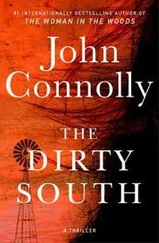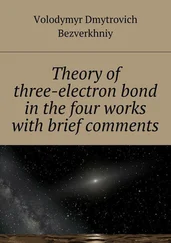As Butler’s work tracks its trajectory through later essays and books, the focus on gender, the performances of subjectivities in process and the emphasis on cultural constructivism eventually lead to a politics writ large at the scale of infrastructures and their spatial support systems. Acts of troubling here locate subjectivities in performative collective formation and spaces in the midst of being made and unmade in intimate embedded relations. A performing subjectivity is a collective subjectivity that is demanding a public space in which to enunciate its concerns. Closing down or restricting spaces of public gathering is an act of cleansing that obviates creative possibilities for new forms of life and living together (Butler 2014; 2016). Infrastructures emerge as a theme in Ben Campkin and Rosie Cox’s edited collection, Dirt: New Geographies of Cleanliness and Contamination, according to hierarchies of the low and the high, specifically drawing attention to how the subterranean depths hold and channel the filthy effluents of a city (2007). These are the infrastructural systems upon which we depend for our wellbeing, and they must be understood as socio-technologies, which bind technology and technics with subjectivities. Supporting some, letting others fall and fail.
It is toward thoughts of our environmental ‘entanglements’ that Donna Haraway likewise leads the reader in Staying with the Trouble: Making Kin in the Chthulucene (2016). Here, trouble leads directly to the central importance of dirt; to soil and compost and how to work and think with multi-species critters out of which we humble humans are also composed. Haraway looks for “humus-friendly technological innovation” wilfully combined with “creative rituals” (2016, 160), a gesture toward dirtying the presumed purities of scientific objectivity, and what she has in her earlier work called the ‘God trick’. We are always in the shit, we cannot presume to be looking at it from a privileged position high above or from a position that is omniscient and thus nowhere. Dirty theory places us in it, where we already are, groping darkly about.
Haraway speaks of tentacular thinking and storytelling, and of projecting an alternative vision of our current epoch under the title “Chthulucene”. Offended that, yet again, the figure of man, as designated by the Anthropos, is used as primary marker of the Anthropocene, Haraway counters this conceit with her denomination of the Chthulucene (2016). Dirt participates in the hybrid, the monstrous and the improper, and Haraway’s alternative figure resembles nothing Vitruvian. No such perfect human figure, the Chthulucene is more terrifyingly Medusa-esque, with tentacles and slippery, multiplying limbs. It is a counter-figure that is supported by a counter-narrative, able to collapse temporal matrices and to tell other stories. It disrupts hierarchies and plunges us into the dirt, the slithering of worms, the haptic grasping of tentacles, the mucky celebration of multi-species, non-human relations. The Chthulucene is both monstrous figure and geological epoch, both/and. Haraway’s counter-concept for a geological epoch figured otherwise is drawn from a story by the African American sci-fi writer Octavia Butler (Haraway 2016, 119) about how we find ways out of destroyed environments, and reduced relations. The heat of the humus pile is where Haraway argues we get dirty, because “we need a hardy, soiled kind of wisdom” if we hope for worldly, human and non-human recuperation (Haraway 2016, 117). Less abject than joyous, it is a dirty melée that we find ourselves within. Haraway calls the world ‘Terra’, earth, dirt. She borrows this act of naming from another science fiction writer, Ursula Le Guin. Haraway’s mobilised acronym SF (Science Fiction; Speculative Fabulation; String Figures) encourages a hands-on approach to staying with the trouble of local and global worlds. We have to be able to tell a good and dirty story, even mutter a few dirty words, to infect the habits of thought of those who have become too complacent, unbelieving or disengaged. Contamination is not all bad, as Anna Tsing has argued in her journeys with mushrooms to the ends of the world (Tsing 2015). “We are contaminated by our encounters, they change who we are as we make way for others” (27), a proposal that looks to the value of passing knowledge along and making way for future generations, as well as acknowledging the eventual decay of the body once it has seen its life through. Relations of contamination are both material and semiotic.
There are theories of dirt that have been propounded from Douglas to Campkin and Cox, and explored via alternative narratives and practices from Bloomer to Haraway, but what happens where we warily mobilise dirt as its own kind of theory? Dirty theory? Again, this is nothing new. Katherine Shonfield has done it with goose feathers, writing and wit (2001). Dirty theory is a hand-me-down, worn-in, a little grubby. By intersecting with dirty thinkers and dirty doers, I’ll attempt to muck out a few concept-tools that might belong to this thing called dirty theory. Following Douglas, and listening to Campkin, where possible I will attempt to maintain a mundanity of metaphors (Campkin 2012). Simply, I should keep my figurative language a little grubby.
What can theory do, anyway? It comes before and after the subject matter under consideration, operating as a speculative gesture in anticipation, or else a means of critical reflection after the fact. When theory gets dirty then it begins to work with, from the midst of what you are doing, from the midst of the situation that is being analysed, designed, discussed.
What does dirty theory do? Dirty theory contravenes disciplinary boundaries. Dirty theory is impure. Dirty theory moves in ways that are not very decorous. Dirty theory mixes meanings and matterings (always has). Dirty theory disrupts norms. Dirty theory, like any theory, is apt to be abused and done badly, and is peopled as much by the disreputable as by the earnest. It is important to see where dirty theory has become toxic, and it will continue to be important to explore how dirty theory can be creative. Moving from theories of dirt to dirty theory has been a way for me to test a mode of thinking and practicing from the mess of our Anthropocene epoch, of inventing dirty theoretical operations from knee-deep in the dirt. Again, Douglas opens up a glimmer of hope, reminding us that from our multifarious situated engagements with dirt, as subject matter and approach, something creative may yet be fostered. She asks: How does dirt, normally condemned as destructive, become creative? (Douglas 1966, 160).
Chapter 1
A Dirty, Smudged
Background
The primary reader on dirt, Purity and Danger: An Analysis of the Concepts of Pollution and Taboo , which was first published in 1966, was bequeathed to us by the ethnographer Mary Douglas. That this is the work of an ethnographer should be a reminder that in pursuit of an adequate approach, we must remain close to the ground, listening, not being quick to make assumptions, not judging pre-emptively. Ben Campkin and Rosie Cox, who dedicated their edited collection Dirt: New Geographies of Cleanliness and Contamination (2007) to Douglas, subsequently address this material-concept, dirt, from the point of view of geography, thereby expanding social considerations of dirt in order to address its spatial qualities. Dirt, they explain, “slips easily between concept, matter, experience and metaphor” (1). It gets into the gaps, troubling the distinctions by which we attempt to order and control a world. Campkin and Cox’s project aims to update theories of dirt with an emphasis on their spatial implications, and as a means of analysing societies and spaces in their complex relations to dirt.
Читать дальше












